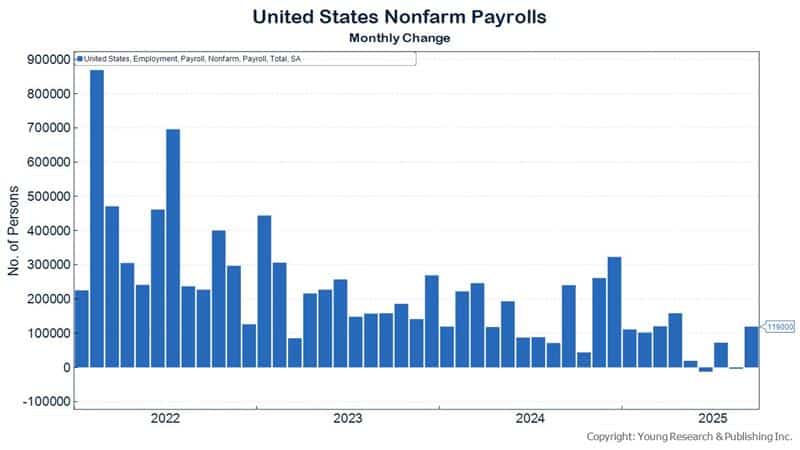
Total nonfarm payroll employment edged up by 119,000 in September but has shown little change since April, the U.S. Bureau of Labor Statistics reported today. The unemployment rate, at 4.4 percent, changed little in September. Employment continued to trend up in health care, food services and drinking places, and social assistance, while job losses occurred in transportation and warehousing and in the federal government.
This news release presents statistics from two monthly surveys: the household survey, which measures labor force status by demographic characteristics, and the establishment survey, which measures nonfarm employment, hours, and earnings by industry.
Publication of September data was delayed more than six weeks due to a lapse in federal appropriations. Household survey data collection for September had been completed prior to the shutdown. Establishment survey data include responses collected before the shutdown and additional self-reported data submitted electronically during the shutdown, resulting in a higher-than-usual initial collection rate of 80.2 percent. BLS will not publish an October 2025 Employment Situation report because household survey data could not be collected. October establishment data will be published alongside November data on December 16, 2025.
Federal Government Shutdown
Both the unemployment rate, at 4.4 percent, and the number of unemployed people, at 7.6 million, changed little in September but remain higher than a year earlier. Unemployment rose for adult women (4.2 percent) and Asians (4.4 percent), while rates for adult men, teenagers, Whites, Blacks, and Hispanics showed little change. The number of long-term unemployed held at 1.8 million, representing 23.6 percent of all unemployed. The labor force participation rate, at 62.4 percent, and the employment-population ratio, at 59.7 percent, changed little over the month. The number of people employed part time for economic reasons remained at 4.6 million, while those not in the labor force who currently want a job fell by 421,000 to 5.9 million. The number of marginally attached workers held at 1.7 million, including 557,000 discouraged workers. […]
Read more here.



